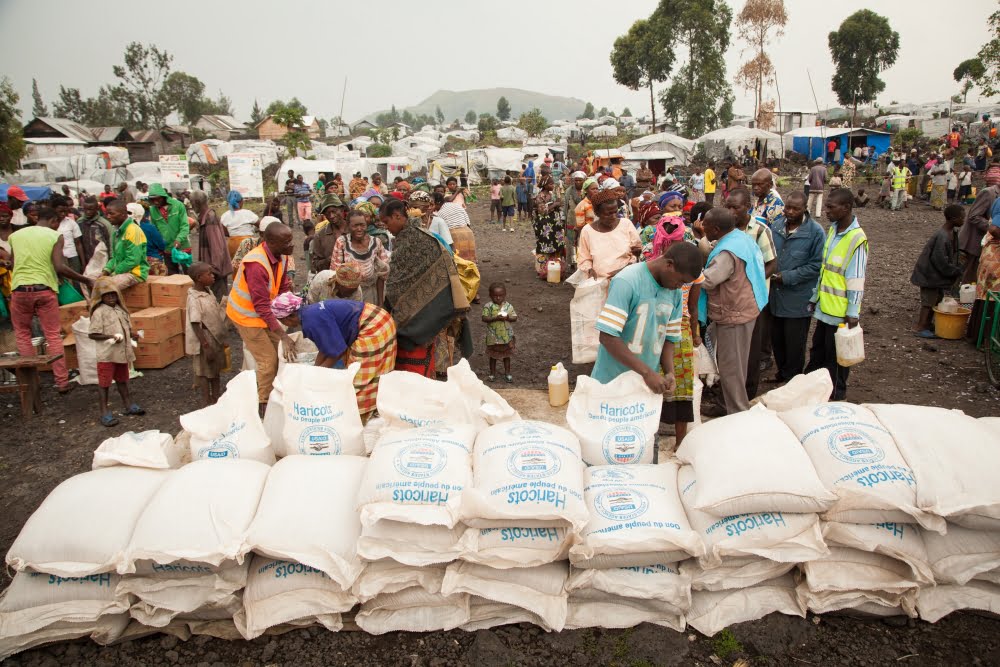Facing a massive funding shortfall, the World Food Program in January cut rations for Congolese refugees in Rwanda by 25%. Protests against those cuts turned deadly on February 27th when Rwandan police fired into a crowd, killing 11 refugees.
This incident was yet the latest example of an exacerbating crisis in Central Africa where several countries are struggling under the weight of refugees from DRC, Burundi and South Sudan. Making matters worse, these forgotten crises suffer from a severe lack of international funding, recently leading to aid agencies cutting food aid to the refugees once again. The situation now facing both refugees and their host countries is dire, fueling further instability in a reminder of why proper funding, programming and attention is needed for refugees around the world.
Africa currently hosts an estimated 18 million refugees and displaced peoples, roughly 26 percent of all refugees in the world. The situation has gotten worse in recent years as conflicts in Yemen, South Sudan, Burundi, the DRC, the Central African Republic and Nigeria have sent new millions across borders. African nations are used to hosting refugees, but with so many simultaneous conflicts, many countries are starting to buckle under the strain.
Making matters worse, international funding to help countries cope is falling far behind what is needed. In 2017, this resulted in food ration cuts in several different refugee situations. For example in August 2017, the World Food Programme was forced to reduce daily rations for refugees hosted in Tanzania by almost 40 percent. In October, the WFP cut rations for refugees in Kenya by 30 percent, just six months after full rations were reinstated. Food rations in Uganda for the estimated 2 million refugees, mainly from South Sudan, were in constant flux, being cut in half at one point due to funding woes.
Yet even as countries and aid agencies struggle to provide basic nutrition, more refugees come. Renewed conflict in the DRC’s Ituri region, as well as continuing political instability in Burundi, has further swamped Rwanda and Uganda. Camps in Kenya and Ethiopia now have new Yemeni refugees to cope with, as well as the Somali refugees who have often called those countries home for decades. Even Tanzania, no stranger to hosting hundreds of thousands of refugees, is finding its hospitality strained.
The ongoing issue of hunger is forcing some refugees to return home, even though the violence they fled has not abated. These returns do not fix the problem, but rather shifts the humanitarian burden to harder to reach places.
In many ways the issue is not donor fatigue but rather donors have been maxed out.
Even the Trump administration, despite threats to cut funding, has slightly increased its financial support for the WFP. But with so many crises going on the world – potential famine in Yemen and the Horn of Africa, new refugee flows from Myanmar and Venezuela, disease outbreaks in Yemen and Bangladesh, rebuilding efforts in Iraq and Syria – there is only so much donors are able to address. But while funding needs keep increasing, many of the main donors that groups like the WFP rely on have hit their cap for what they are willing to give. Thus, while funds keep coming in, the shortfall between what is available and what is needed continues to grow.
There is no easy fix for these issues, but it does highlight the need to rethink how refugees are hosted. The lack of the ability to work in many countries makes refugees reliant completely on aid, a situation that is becoming increasingly unsustainable. Likewise the lack of political will to address the root causes causing people to flee their homes means there is little chance that things will improve. New ideas are needed to help both refugees and their host communities to cope, a realization that will hopefully be on the minds of delegates negotiating the upcoming Global Compact on Migration later this year.
